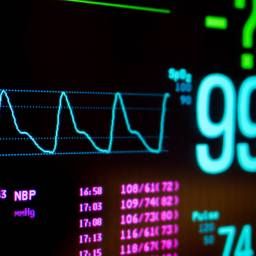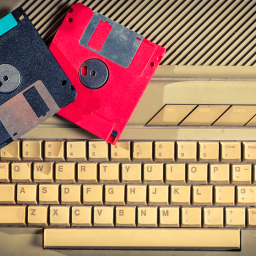In this topic we will cover the following:
- What is semiotics?
- Three types of signs – Icon, index, and symbol.
Semiotics is the study of signs and symbols. The preceding clip from the movie ‘Waking Life’ touched on the concept of semiotics.
Give me a sign
Signs can be visual, linguistic, or auditory and create meaning of its own.
A sign is made up of two components:
- Signifier – This is the way the sign is presented, the word, image, sound, or gesture.
- Signified – This is the concept, idea or object that the signifier represents.
In the clip from ‘Waking Life’, the woman talks about “love” as a signifier. The meaning that is conjured up by listening to the word ‘love’ is the signified and can have a universal meaning.
Signifier
Signified
- Love
- Care
- Heart
- Romance
Signs are all around us
When you are travelling and hear the word sign, you will likely think of road signs or airport signage. Signs that direct or inform us. In this context, we use the term sign to describe anything that communicates meaning.
Stop!
The stop sign is a classic example of semiotics in action.
The octagonal red stop sign is used in most countries around the world. We associate the shape and colour with the instruction to stop. This concept also translates to traffic lights. When we see the red light, we know we need to stop.

A natural sign
As designers, we will often think about signs as something that are designed to convey a message. However, it is important to understand that in semiotics, not all signs are designed or constructed.
A good example of this is the association we make when we see a puddle on the ground. We are likely to interpret the puddle as a sign that it has recently rained. Likewise seeing smoke is usually associated with fire.
According to Charles Sanders Peirce, a modern theorist of semiotics, there are three ways that a sign can link a signifier to something signified.
The three ways are:
- Icon - literal meaning
- Symbol - learned meaning
- Index - causal meaning.
Consider the different ways ‘love’ and ‘heart’ can be used as icons, symbols, and indices.
Real life depiction

Icon
Signfier
Index

Icon
An icon has a literal meaning. It is something that resembles the object or idea it represents.
The image of the human heart and the simplified heart shape is considered to be an icon. Another example can be a drawing or illustration of a cat.
Cat icon
Real cat

This icon can represent the idea or concept of a cat. A photograph of a cat can also be an icon in this context.
Symbol
A symbol has a learned meaning; it has no relationship between the signifier and the signified. It is only through a shared understanding of a language and culture that we can associate the symbols with objects and ideas.
What is love?
Consider the various symbols for love. The hand gestures used to show love varies in different cultures. Western cultures are likely to be familiar with forming the heart shape by putting their arched hands together, whereas Korean pop-culture popularised the finger flicker gesture as a symbol for love.
Heart arches

Heart flick

Text as a symbol
Text can also be a symbol.
DOG
The word “dog” when written down does not resemble a dog or have any link to dogs, when spoken the sound is not indicative of a dog. However, for speakers of the English language it is commonly understood that the word “dog” represents the four-legged furry domestic human companion.

Radiation
The radiation symbol was designed in 1946 by a group at the Berkeley Radiation Laboratory, University of California. They were eager to develop a warning symbol for this new kind of dangerous material.
Biological hazard warning
The biological hazard warning symbol was designed in 1966. One of the designers, Charles L. Baldwin of The Dow Chemical Company, has been quoted as saying:
We wanted something that was memorable but meaningless.Charles L. Baldwin.
Radiation
Biological hazard
You can find the biological hazard symbol used in hospitals and other medical facilities as a label for spaces or objects that pose risk due to biological hazards.
The group of designers drew up a set of six criteria for the development of a standard bio-hazardous material warning graphic.
The symbol should be:
- Striking in form in order to draw immediate attention.
- Unique and unambiguous, in order not to be confused with symbols used for other purposes.
- Quickly recognizable and easily recalled.
- Easily stencilled.
- Symmetrical, in order to appear identical from all angles.
- Acceptable to groups of varying ethnic backgrounds.
The symbol uses similar colour and shape relationships to the ionising radiation symbol, this would have helped with its acceptance.
So, the question is will the previous warning symbols stand the test of time?
The next video will discuss this idea further.
The relationship of symbols and icons
Over time, icons can become symbols and symbols can become icons. The prevalent use of each icon and symbol, and how it evolves in the society, will determine its place and function.
Designers play a role in shaping what the embedded meaning of a sign is. The unlimited power of media can truly influence the mindset and behaviour of a generation and the generations to come.
Index
An index has a causal meaning; it is a sign that has a link to the object or idea that it represents.
The heart rate image is an index because it shows a link between the beating heart and the information displayed on a line monitor.
Smoke is an index for fire, and puddles are an index for rain.
Index of heart

Index of fire

Index of rain

Other examples include the use of a knife and fork to represent food or an aeroplane to represent travel.
Food

Travel

Indices are popular in user interfaces. The save icon is commonly represented as a floppy disc because the floppy disc was the predominant storage format at the time. In the following image you can see examples of ‘@’ being used to represent email, and the house illustration which is often used to represent ‘home’ in apps and websites.
Modern index
Susan Kare was one of the first graphic designers that joined the team at Apple in the late 1980s. Kare applied her background in art to the modern application of graphic design. Her designs have stood the test of time and have become widely used and accepted.
Here are some examples you might be aware of:
- Floppy disk icon as a sign to save digitally.
- Cylindrical rubbish bin as a sign to delete files.
- Magnifying glass as a sign to enlarge or reduce image resolution on screen.
- Hand watch as a sign to show the time.
Floppy disk

saving = floppy disk

Now

Signs can change and adopt new meanings over time. As a designer, you may come across situations where you need to rethink, reconsider, or even redesign signs.
The following video is one example of where signs should possibly be reviewed, and society needs to learn or unlearn an already established sign.
Semiotics is the study of signs and symbols. A sign is made up of two components – The signifier and the signified.
There are three types of signs.
- Icons have a literal meaning and resemble the object or idea they represent.
- Symbols have a learned meaning.
- Indices have a causal meaning.

